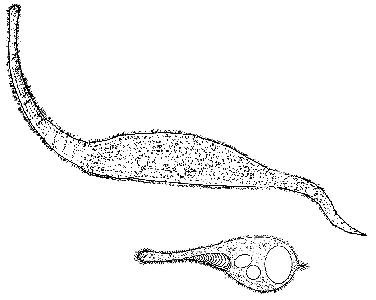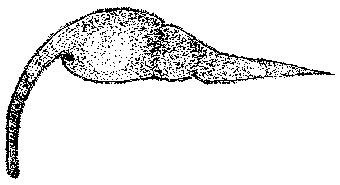| My second idea for this article, after
discussing it with Dave Walker, was to include some words about Dileptus
and Litonotus, responding to "what's a 'Dileptus'?"
Dileptus: Phylum Ciliaphora,
Class Gymnostomea, Order Haptorida, Family Trachelidae.
Litonotus: Phylum Ciliaphora,
Class Gymnostomea, Order Pleurostomatida, Family Amphileptidae.
Both ciliates belong to the class Gymnostomea,
which have an anterior mouth at or near the surface; it's supported but
not constrained by trichites—internal rod-like structures—and can stretch
greatly to accommodate large prey. The nucleus of both is polyploid, but
the Haptorida (Dileptus) have toxicysts around the mouth,
and the Pleurostomidae (Litonotus) do not. Both have long,
flattened necks and relatively large bodies.
Dileptus' cytostome is round, at the base
of the neck; its neck is usually in motion; water-expelling vesicles are
small and numerous; and Dileptus is usually larger than 250 µm.
Here's a site with more information and photomicrographs
of different species of Dileptus. (And, while some ciliates
reproduce every few hours, Dileptus normally requires a day
or more between fissions.)
Litonotus' cytostome is a long slit; it has
a prominent posterior water-expelling vesicle, a smooth pellicle, and it's
typically 75-150 µm long.
Dileptus and Litonotus can be confused
with each other and with Lacrymaria
olor. The position of the mouth is distinctive: Lacrymaria's
is at the end of its very elastic neck, Litonotus' is on the side
of its neck, and Dileptus' is where the neck and body join. Motion
of the neck differs, too: Lacrymaria's is whipped out and around,
noticeably changing length, Litonotus' is usually carried
at a slight angle to the body, and Dileptus' sweeps side to side
in arcs exceeding 135°. Litonotus is much smaller than
the other two. Once you've seen all three, confusion vanishes. |


